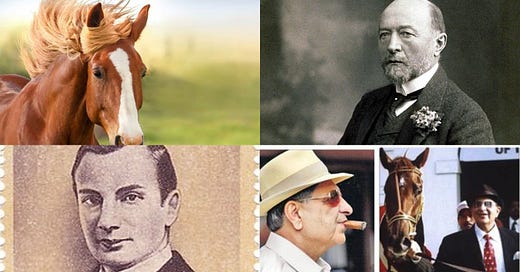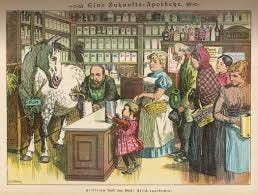Every second child in 19th century Germany was infected with diphtheria. It was the most frequent cause for deaths in children under 15 years. Emil Von Behring, a German scientist observed that guinea pigs which were immunized with the diphtheria bacterium never got the disease again. But he needed a larger animal that could produce higher quantities of serum. Horses were his biggest bet. World War 1 was raging, and German horses were in short supply. So, he bought in old war horses that were ready for slaughter from Hungary and Poland and started producing serum from them.
In 1891 Emil Behring injected antiserum for the first time into a young girl with diphtheria and saved her life. While he got the Nobel in 1901, serum horses would become the saviors of humanity against diphtheria, tetanus and snake venom.
Around the same time in 1899, Dr Waldemar Mordecai Haffkine, a Jewish Ukranian microbiologist spent an exhausting three months in the corridors of Grant Medical College in Mumbai to develop the vaccine against cholera and plague. The Haffkine Institute named after him would do seminal work in vaccine production especially from horse serums in India.
The largest supplier of retired horses for the Haffkine Institute was a stud farm in Poona owned by a Soli A Poonawalla. His flamboyant son, Cyrus would spend a lot of time at the stud farm and observed the old horses being sent off to the Bombay institute. He got his vet to explain him the reason and understood the process. He quickly figured that they were best placed to produce vaccines from horse serum at his own stud farm. He hires the top team from Haffkine, borrows money from his father and sets up his first facility.
They get started with the release of DTP vaccine for children in 1974. Local vaccines are in short supply and imported ones were expensive. Cyrus Poonawalla decides to play the mass game and focusses on building capacity for producing low cost vaccines. The rest is history.
Serum Institute of India would become the world’s largest vaccine maker and also play a big role in making India self-sufficient in vaccines. Now it is at the precipice of delivering the largest number of lifesaving shots the world desperately needs.
And that’s how a Horse, German, Jew and a Parsi stud farm are connected in a weird way to save the world.
BackStory
2021 will be the year of Vaccines. And what better than a vaccine story to kick off the #1MinuteStories series for this year.
More reading on Emil Behring tryst with destiny as he pioneered the horse serum technique and won the Nobel Prize in 1901 here.
India and the world have largely forgotten Dr Waldemar Haffkine’s contributions. His life saving vaccines against cholera and plague were remarkably effecttive. But he had to first take them himself to prove their efficacy.
And finally, Cyrus Poonawalla has been honored with Padmashree and has revolutionised vaccine production in India. But the man continues to retain his flamboyance all through. The story on Serum Institute and how his son Adar is at the centre of the biggest challenge the company faces can be gleaned from this well written Forbes article.






Great 👌
Quite frankly, Parsis (real minority) have done so much for the country but they so rarely get talked about at national forums or are given credit for... Here's wishing continued success and glory to Serum Institute...